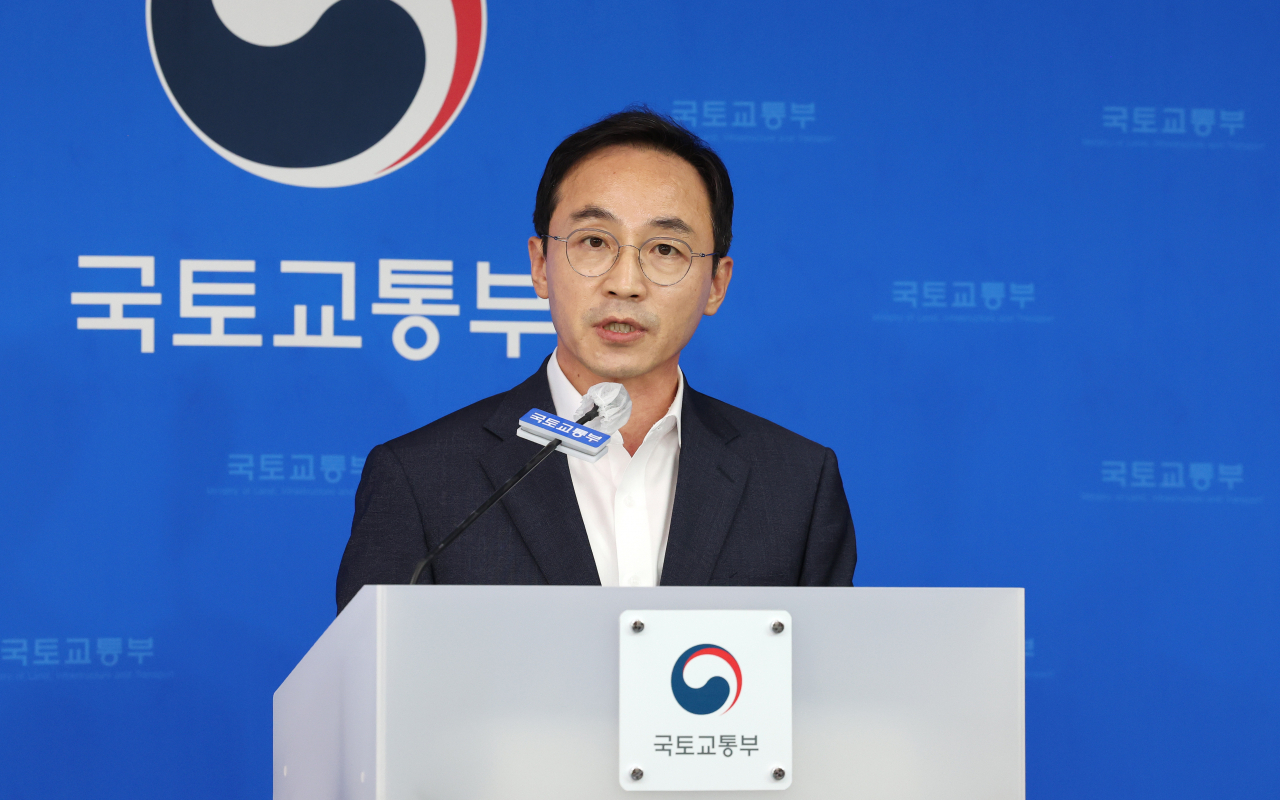Ministry to launch safety inspection into flat-plate apartments
By Lee Yoon-seoPublished : Aug. 3, 2023 - 15:31

The Ministry of Land, Infrastructure and Transport said Thursday it will launch full-fledged safety checks into buildings constructed using flat slab methods, following revelations that some 16.5 percent of apartment complexes built under the state-run Korea Land and Housing Corp. (LH) are missing critical structural components.
The Ministry of Land said it will conduct investigations of 293 apartment complexes built by private companies that used flat slab methods starting next week, through the end of September. Out of 293 complexes, about a third, or 105 apartment complexes, were found to have used flat slab methods in residential buildings.
"We will fully utilize specialized institutions to check whether the construction layouts have been properly drawn up not only for underground parking lots, but also for residential buildings, and quickly and thoroughly check whether it has been constructed accordingly through on-site inspections," said Kim Oh-jin, vice land minister, during a briefing Thursday afternoon.
"If any violation of safety responsibility is found, strong punishments such as cancellation of registration, suspension of business and fines will be imposed," he said.
The government said it will first check whether there are any safety problems with apartment complexes built after 2017, and if necessary, consider expanding the scope of the investigation.
The Ministry of Land explained that apartments are regularly subject to detailed safety inspections every two to four years under the current law, and, as such, decided that examinations of recently built apartment complexes will be held first.
The inspection results will be required to be confirmed by the Korea Authority of Land & Infrastructure Safety, a quasi-governmental institution affiliated with the Ministry of Land.
Regional governments and state-run construction companies also launched full-fledged investigations into buildings constructed using flat slab methods as of Thursday.
The Busan Metropolitan Government announced Thursday that it will conduct a special inspection of 48 local structures in the city that were built using flat slab designs, from Monday to Aug. 30.
The special inspection will be conducted jointly by the public and private sectors to see if the buildings meet mandatory structural design criteria, the city government said. The inspection will test the concrete's strength as well as the strength of reinforcement materials used in the concrete slabs.
Seoul Housing and Communities Corp. (SH) also said on Wednesday it will inspect eight apartment complexes it has built in Seoul using flat slab designs, with the help of third-party institutions specialized in performing safety diagnoses.
SH said it plans to announce the results after thorough tests, including nondestructive tests on concrete. It aims to complete the investigation by the end of the week, it added.
The Gyeonggi Housing and Urban Development Corp. also announced Wednesday that it will launch investigations into 10 apartment complexes it has built with the flat slab method, with the help of various safety diagnosis agencies, supervisors and construction companies to check whether major structural parts were built with appropriate structural components.
The series of investigations follows the LH's revelation Monday, when it released a list of its construction projects across the country that have used flat slab designs lacking necessary steel reinforcements.
The flat slab design utilizes concrete columns to directly support concrete slabs in a structure without the support of steel beams. The method is utilized to allow more vertical space. However, since the lack of beams could lead to heavy pressure on the concrete columns, the implementation of extra vertical steel reinforcements is often required for safety.
According to the LH's list, 15 of 91 apartment buildings the state-run corporation has built neglected to use steel reinforcements.
The LH's announcement added fuel to the controversy, after an underground parking lot at an apartment complex that was under construction in Geomdan New Town in Incheon in April collapsed due to a lack of the steel reinforcements. LH was in charge of the construction, and it was using the flat slab method.
Experts say the flat slab design itself is a sound way to construct buildings, but during the construction process, meticulous attention to detail and clear communication are needed.
"When used properly, flat slab designs are structurally very safe and an effective way of constructing buildings," Ahn Hyeong-jun, a professor of architecture at Konkuk University, told the Korea Herald.
"However, communication is key when trying to build structures using the flat slab designs, as construction workers must go through the complicated process of weaving reinforcements at the joint between the column and the concrete slab above. There are lots of foreign workers at the site, and such communication is not often easily made," he said.



















![[Today’s K-pop] Treasure to publish magazine for debut anniversary](http://res.heraldm.com/phpwas/restmb_idxmake.php?idx=642&simg=/content/image/2024/07/26/20240726050551_0.jpg&u=)